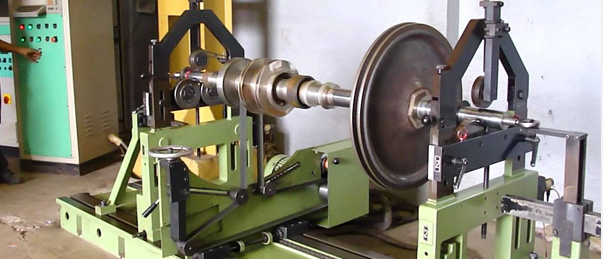Balancing

Why Balancing
In order to prevent unbalance and to protect the drive system, the respective component, e.g. a coupling, must be balanced. The former standard DIN ISO 1940, which had been specifically published to cover this subject, has recently been technically revised and renamed to DIN ISO 21940-11. The balancing method is selected depending on the coupling type and its configuration. There are different ways coupling balancing is done but mainly depends on speed, application, Maximum Diameter to length ratio, etc.
Balancing Methods
Couplings are normally balanced in two major ways
- Individual components or all the parts of coupling are balanced separately in accordance with the specified balance quality.
- The balancing of completely assembled couplings is only pertinent to torsionally rigid couplings or backlash-free couplings, e.g. disk or metal bellows coupling. This method provides for the compensation of all errors/tolerances at the interfaces of the coupling components. Optionally, individual parts and/or sub-assemblies are balanced beforehand in order to minimize the need for unbalance correction during the assembly balance.
- For the half-key balance, the machine shaft is balanced with an inserted half key or before the keyway is machined. In this case, the coupling will also be half-key balanced. For this, the coupling sub-assembly or the coupling component is drawn onto a fixture (shaft) and balanced with a filled keyway. The keyway can either be filled with a half key, or the coupling is balanced prior to key waying.
- Full-Key balance is more common and easier method because the exact location and weight of the key must be known when balancing with an inserted half key is performed. These details are often not available in advance, and this procedure is quite complex, too.
With full-key balance, the machine shaft is balanced with an inserted full key. In this case, the coupling is drawn onto a balance fixture after the keyway has been machined, and is then balanced with an empty keyway.
General Practises In Industry
Gear couplings generally cannot be balanced as a complete assembly, because the hub and the sleeve are not concentric to each other on account of the clearance in the tooth mesh. The hub and the sleeve are not centered until they are under load, and this condition is not given during balancing. For this reason, gear couplings can only be balanced in individual components or sub-assemblies.
An assembly balance for elastomeric couplings is not appropriate because the elastic intermediate ring or the elastic buffer always act as the “resilient, deformable section point” between the two coupling halves. Under operating conditions, the ring will deform differently than during the balance procedure, and can, therefore, not be determined as a component for balancing.
Ask Expert
RATHI has vast experience in Coupling Balancing. We are capable of doing balancing for couplings running up to 10000rpm and Diameter up to 700mm. We have 2 balancing machines who can take care of your all balancing need. We can do Balancing from ISO GR40 to ISO GR0.4 depending on application Industry and customer requirements. We are also conversant and expert in applicable standards for Balancing of Couplings such as:
- API 610 (8th, 9th,10th Edition) (American Petroleum Institute
- API 671(3rd, 4th Edition) (American Petroleum Institute)
- ISO 1940-1(2003)
- AGMA 9000 C90 (Feb -1990) (American Gear Manufacturers Association)
- AGMA 515.02 Class 8 (American Gear Manufacturers Association)

